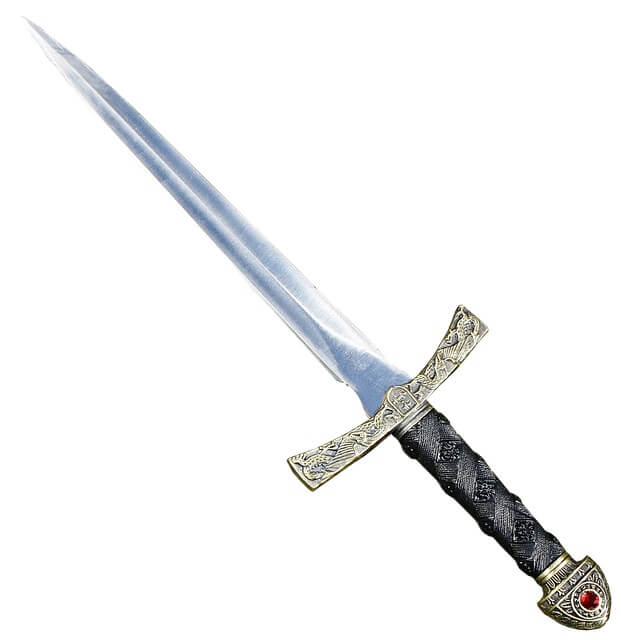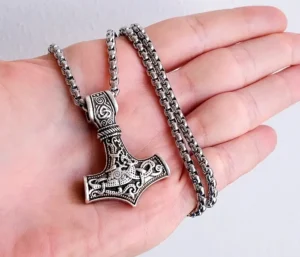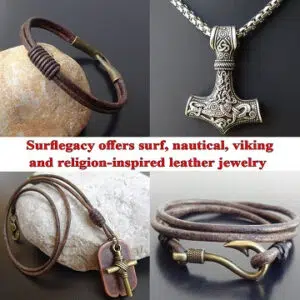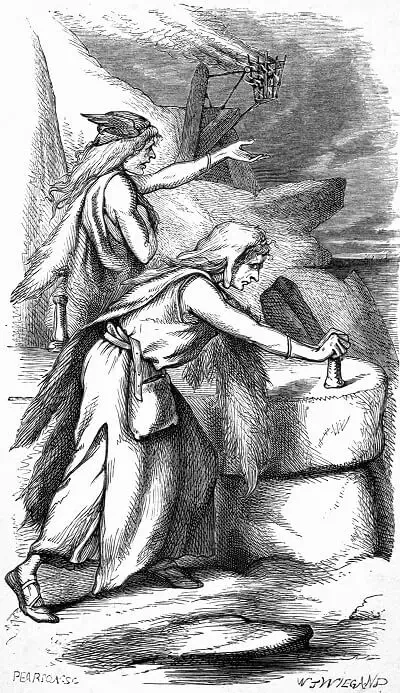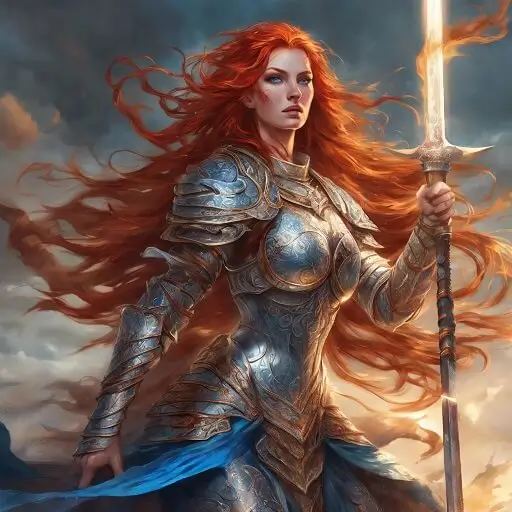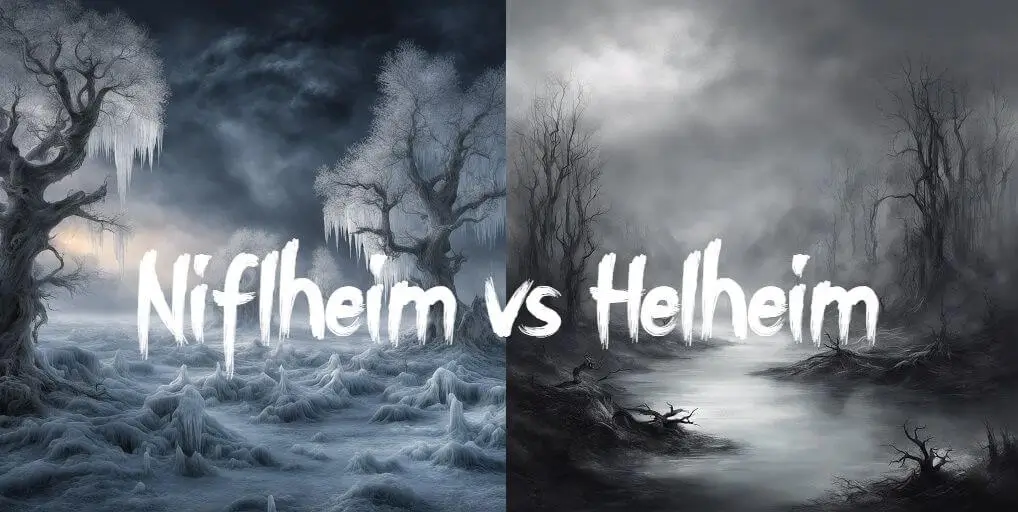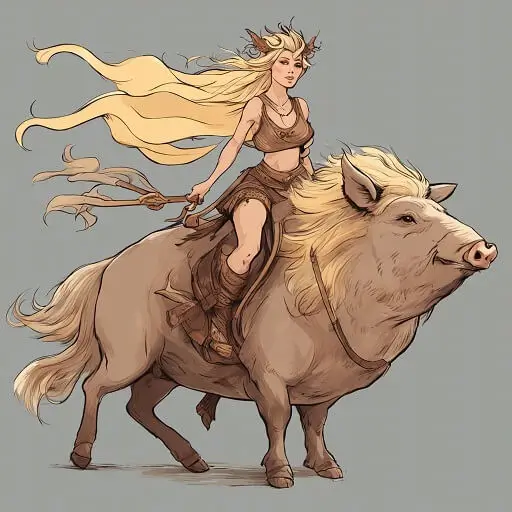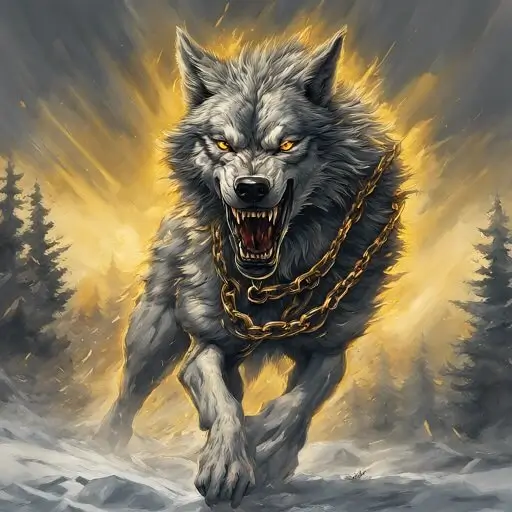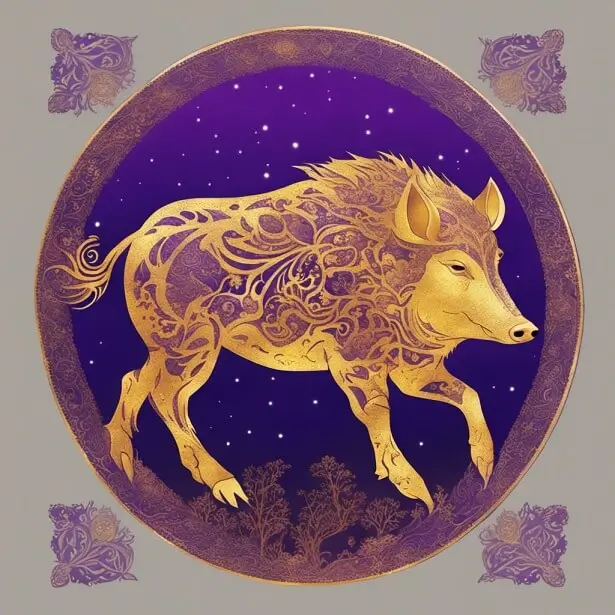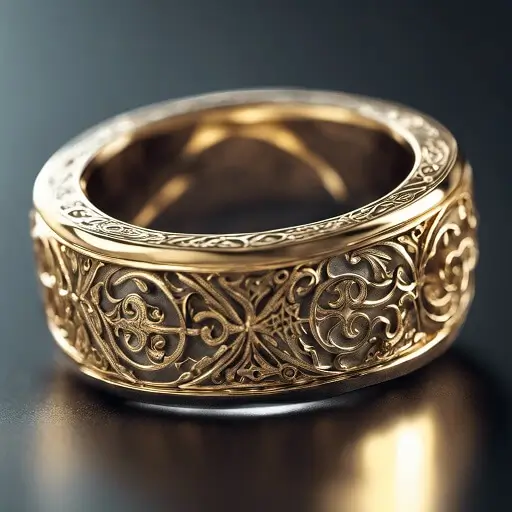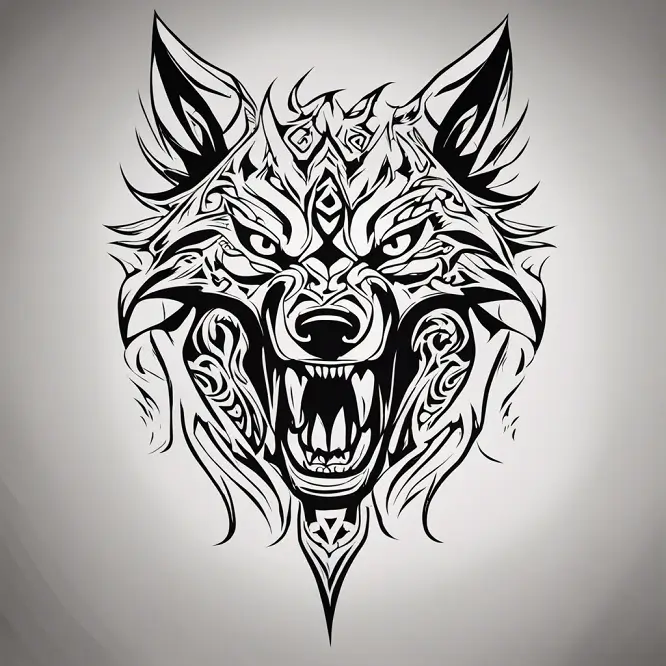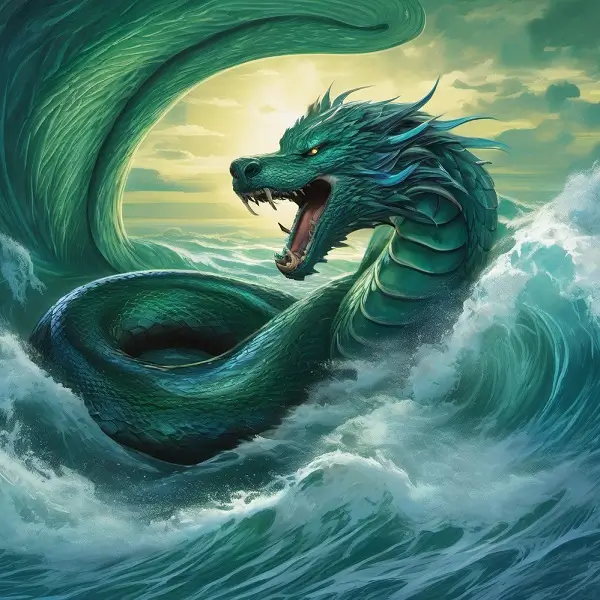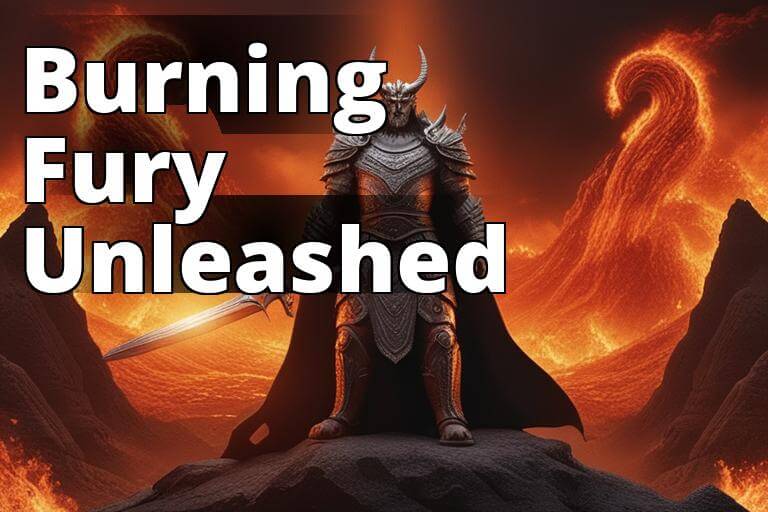In the realm of Norse mythology, one name resounds with a mystical aura: Lævateinn (also known as Laevateinn), a sword of ancient legend. This fabled weapon, often known as “The Fiery Blade,” holds within its very essence the power to shape worlds and ignite cataclysmic events.
Welcome to a journey that unveils the origins, significance, and symbolic meaning behind Lævateinn. This mythical sword, shrouded in both mystery and awe, is intimately connected to fire, creation, and destruction within Norse mythology. As we embark on this exploration, we will gain a deeper understanding of the captivating tales that surround Lævateinn and its enduring impact on literature, art, and popular culture.
Join us as we immerse ourselves in the realm of gods and heroes, shedding light on the essence of this legendary blade.
Origins and Etimology of Lævateinn
In Norse mythology, the renowned weapon known as Laevateinn, also referred to as Lævateinn, holds a significant place. It is mentioned in the Poetic Edda poem called Fjölsvinnsmál and is attributed to Loki, the mischievous deity known for his cunning ways. Scholars, such as Sophus Bugge, have made an important emendation to the name, changing it from “Hævateinn” to “Lævateinn.”
The true form and nature of Laevateinn have sparked debates and interpretations among experts. Some scholars describe it as a dart, a sword, or even a wand. The term “Lævateinn” can be translated as a “wand” causing damage, leading to the belief that it could be a powerful weapon. Alternatively, some view it as a kenning for a sword, while others suggest it might represent a magic wand, specifically a seiðr staff.
Laevateinn’s significance lies in its unique role as the only weapon capable of slaying the rooster Viðofnir, perched atop the Mímameiðr tree. According to the wise porter Fjölsviðr in the Fjölsvinnsmál poem, the seeker’s quest requires the use of this extraordinary weapon. The sword’s creator, Lopt, is a reference to Loki himself, further highlighting its association with the deity.
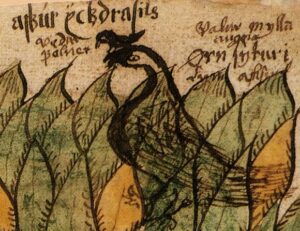
Vidofnir’s head depicted in a 17th-century Icelandic manuscript
Exploring the name and its meanings, the original form “Hævateinn” was interpreted as a “sure-striking dart/arrow” by Árni Magnússon. However, the emendation to “Lævateinn” proposed by Sophus Bugge provides an alternative perspective, suggesting the meaning of “Wounding Wand” or “Wand-of-Destruction.”
Within the Fjölsvinnsmál poem, the weapon is briefly mentioned as “Hævatein” before being emended to “Lævateinn.” It is described as a twig or wand that was plucked by Loki near the gates of Death. Placed within an iron chest alongside Sinmoera, it remains secured with nine strong locks, adding to its mysterious allure.
With its rich mythology and the quests undertaken by mythical characters, it remains an intriguing and potent weapon, carrying both symbolic and practical significance within the Norse tales. The name itself, whether Hævateinn or Lævateinn, reflects the power and destiny intertwined with this enigmatic wand of destruction.
The Significance of Laevateinn: Unleashing Chaos and Shaping Destiny
The creation of Laevateinn holds a significant purpose within Norse mythology. Forged by Loki, the mischievous deity, this magical weapon was not only a product of his craftsmanship but also a key element in a grand scheme. According to mythological accounts, Laevateinn was originally stolen from Loki after its creation.
The purpose behind the creation of this extraordinary weapon becomes apparent when its role in slaying the rooster Viðofnir is revealed. Viðofnir, a mythological bird perched atop the world tree Mímaðeir (which is identical to the world tree Yggdrasil), held a crucial responsibility. As the crowing rooster, it served as a warning system, signaling the impending Ragnarök, the cataclysmic event marking the end of the world and civilization.
However, the existence of Lævateinn disrupted the natural order. This exceptional weapon possessed the power to kill Viðofnir, consequently hindering Odin, the chief god in Norse mythology, from receiving the rooster’s warning. Odin, who would have used the forewarning to prepare his army and potentially prevent Ragnarök, was left unaware of the imminent doom.
It is believed that Loki, the cunning trickster god, orchestrated this scheme deliberately to halt Odin in his tracks, thereby preventing him from averting the inevitable Ragnarök. Loki’s mischievous nature, characterized by his penchant for playing tricks on gods and creatures alike, culminated in this intricate plot, ultimately leading to the demise of Viðofnir and setting the stage for the apocalyptic Ragnarök.
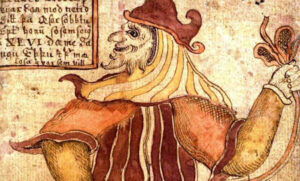
Depiction of Loki the trickster god
The origin of this powerful artifact, its subsequent pilfering by Loki, and its significant involvement in the downfall of Viðofnir, emphasize the complex tapestry of mythological tales and figures within Norse mythology. These events vividly portray the intricate relationships, ambitions, and far-reaching consequences that manifest from the actions of the gods.
Symbolism and Interpretations
Fire holds significant symbolism in Norse mythology, representing primal forces of chaos and creation. It is closely associated with the destructive and transformative aspects of Lævateinn. Just as fire consumes and purifies, the weapon’s power embodies the fiery essence that can both bring destruction and pave the way for new beginnings.
Lævateinn serves as a potent symbol of the interplay between destruction and creation in Norse mythology. Its ability to slay Viðofnir, the rooster atop the world tree, disrupts the flow of destiny and signals the impending Ragnarök.
This act of destruction sets in motion a chain of events that ultimately leads to the renewal and rebirth of the world. Lævateinn thus embodies the paradoxical nature of destruction as a catalyst for transformation and the cyclical nature of existence.
Scholars and enthusiasts have offered various interpretations and theories concerning the symbolic nature of Lævateinn.
Some perceive it as a representation of Loki’s cunning and deceptive nature, serving as a metaphorical extension of his mischief and unpredictable influence.
Others view it as a metaphor for the power of knowledge, magic, or the wielder’s will to shape destiny. The diverse interpretations surrounding Lævateinn reflect the enigmatic nature of Norse mythology and the multiplicity of its symbolic motifs.
In the intricate tapestry of Norse mythology, it emerges as a symbol encompassing fire’s chaotic potency, the transformative interplay of destruction and creation, and the subject of diverse interpretations.
Connections to the World Tree, Yggdrasil
Lævateinn, a renowned weapon in Norse mythology, holds intriguing connections to the world tree, Yggdrasil. Within the Poetic Edda poem Fjölsvinnsmál, Lævateinn is depicted as the only weapon capable of slaying the rooster Víðópnir, perched atop the Mímameiðr tree.
This tree, often identified as the equivalent of Yggdrasil, symbolizes the interconnectedness of the nine realms. Thus, Lævateinn’s association with the world tree highlights its significance as a transformative and pivotal force in Norse mythology.
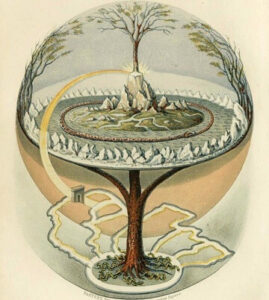
Yggdrasil
Comparison with other mythical weapons in Norse mythology
Laevateinn stands as a remarkable entity among the pantheon of mythical weapons in Norse mythology. In comparison to other renowned weapons like Mjölnir, the hammer of Thor, or Gungnir, the spear of Odin, Laevateinn holds its own distinct characteristics.
Mjölnir, the hammer of Thor
While Mjölnir represents thunder and Gungnir embodies Odin’s wisdom, Laevateinn is closely associated with fire and the transformative power of destruction and creation. The diverse arsenal of mythological weapons in Norse mythology showcases the multifaceted nature of the deities and the stories in which they are entwined.
Shop Viking Jewelry
Are passionate about Vikings or Norse Mythology?
Finding the ideal piece of Viking Jewelry can be challenging and time-consuming, especially if you lack inspiration or don’t know where to look.
Surflegacy, has you covered. We have a wide range of Handmade Jewelry in various styles, shapes, colors, and materials, to accentuate your Viking spirit and look. Do not hesitate to visit our selection HERE
Whatever you wear, you’ll find the ideal trendy piece to complement your wardrobe. Our jewelry is designed to be worn every day, no matter where you go or what season is. Are you ready to step up your wardrobe game?

